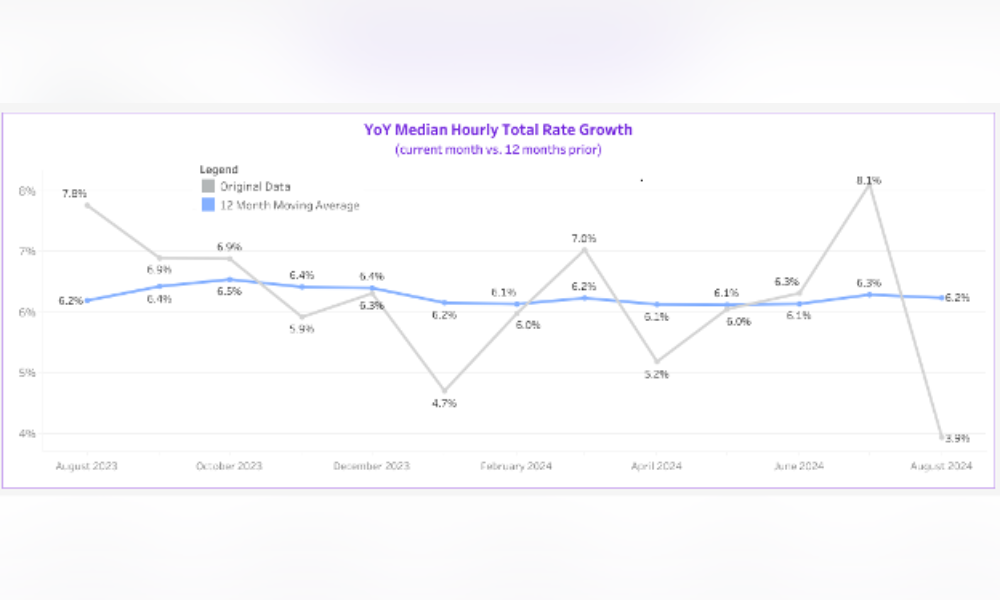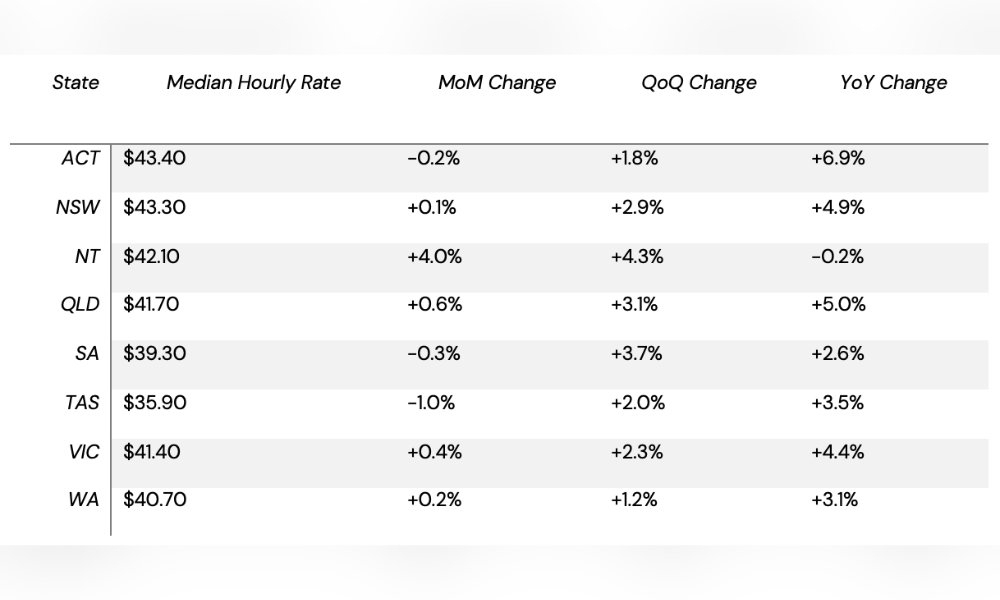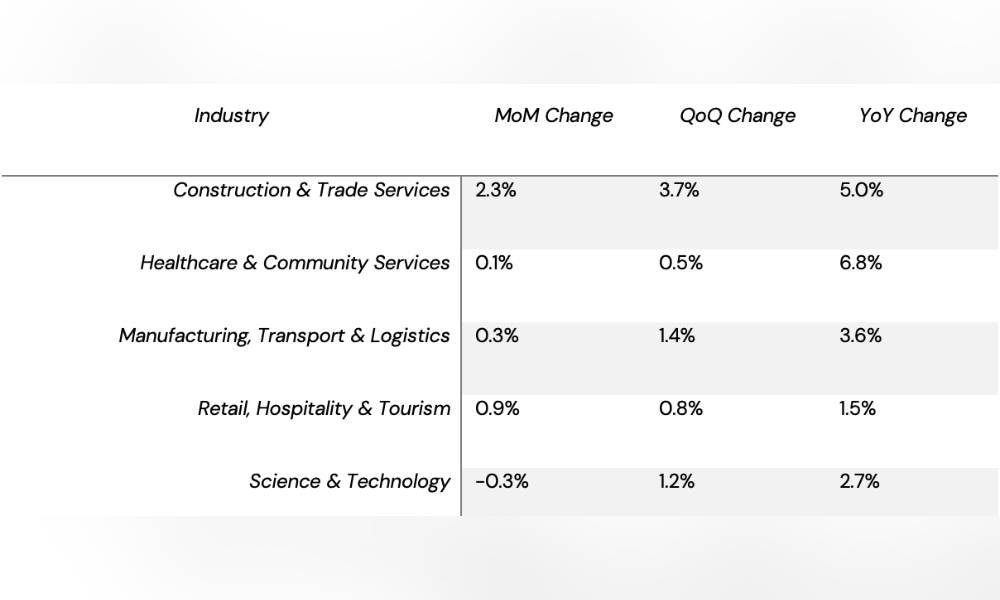
Report warns ‘labour hoarding’ on the rise amid wageflation

Wageflation is a growing concern for businesses across Australia, as the latest Employment Hero August SmartMatch Employment Report highlights the divide between rising wages and shrinking working hours.
According to the report, a 6.2% annual wage growth across sectors, coupled with a 2.4% reduction in median monthly working hours, is straining productivity as employers struggle to keep up with the cost of retaining staff.
"Wage growth is outpacing productivity, which is completely unsustainable, particularly for small businesses folding under the surging cost of operating," said Ben Thompson, CEO and Chief Economist at Employment Hero, in a statement.
The imbalance is further evidenced by the decline in last quarter's GDP, which reported a 0.8% drop in productivity per hour while the average unit cost of labour rose by 1.3%.

Source: Employment Hero
This trend of increasing wages and shrinking working hours has led to concerns about a growing phenomenon known as "labour hoarding."
According to the report, small and medium-sized enterprises are holding onto staff despite reducing their hours, with the expectation that a labour shortage will hit in the future.
This has resulted in higher operating costs, without a corresponding rise in output.
"It's becoming harder for business owners to strike the right balance between maintaining staff and managing wageflation, which means more Australians will inevitably be grappling with job insecurity and inconsistent wages," Thompson said.
"Wageflation over the long term creates problems on both sides of the market, particularly where a pay packet boost today could spell a layoff in the future."
Meanwhile, the report also highlighted sharp regional and sectoral disparities in wage growth.
The Australian Capital Territory (ACT) led the nation's wage growth at 6.9%, while South Australia lagged significantly at 2.6%.
Source: Employment Hero
Across industries, Construction & Trade Services saw the most significant wage increases, with median hourly rates rising to $50.50. In contrast, sectors like Healthcare & Community Services experienced relatively lower wage growth, at just 3.7%.
Source: Employment Hero
"It's also alarming to see the disparity between economic activity across the nation, particularly in unionised sectors like Healthcare and Construction who have the highest median wages in the country," Thompson said.
"While some regions and sectors are thriving, others are facing a lethargic economy where productivity ultimately suffers. When jobs growth across the country is uneven, this creates ripple effects for the communities who are most impacted."